- Home
- George Orwell
Fifty Orwell Essays Page 13
Fifty Orwell Essays Read online
Page 13
1864-5), the good rich man comes back in full glory in the person of
Boffin. Boffin is a proletarian by origin and only rich by inheritance,
but he is the usual DEUS EX MACHINA, solving everybody's problems by
showering money in all directions. He even 'trots', like the Cheerybles.
In several ways OUR MUTUAL FRIEND is a return to the earlier manner, and
not an unsuccessful return either. Dickens's thoughts seem to have come
full circle. Once again, individual kindliness is the remedy for
everything.
One crying evil of his time that Dickens says very little about is child
labour. There are plenty of pictures of suffering children in his books,
but usually they are suffering in schools rather than in factories. The
one detailed account of child labour that he gives is the description in
DAVID COPPERFIELD of little David washing bottles in Murdstone & Grinby's
warehouse. This, of course, is autobiography. Dickens himself, at the age
of ten, had worked in Warren's blacking factory in the Strand, very much
as he describes it here. It was a terribly bitter memory to him, partly
because he felt the whole incident to be discreditable to his parents,
and he even concealed it from his wife till long after they were married.
Looking back on this period, he says in DAVID COPPERFIELD:
It is a matter of some surprise to me, even now, that I can have been so
easily thrown away at such an age. A child of excellent abilities and
with strong powers of observation, quick, eager, delicate, and soon hurt
bodily or mentally, it seems wonderful to me that nobody should have made
any sign in my behalf. But none was made; and I became, at ten years old,
a little labouring hind in the service of Murdstone & Grinby.
And again, having described the rough boys among whom he worked:
No words can express the secret agony of my soul as I sunk into this
companionship...and felt my hopes of growing up to be a learned and
distinguished man crushed in my bosom.
Obviously it is not David Copperfield who is speaking, it is Dickens
himself. He uses almost the same words in the autobiography that he began
and abandoned a few months earlier. Of course Dickens is right in saying
that a gifted child ought not to work ten hours a day pasting labels on
bottles, but what he does not say is that NO child ought to be condemned
to such a fate, and there is no reason for inferring that he thinks it.
David escapes from the warehouse, but Mick Walker and Mealy Potatoes and
the others are still there, and there is no sign that this troubles
Dickens particularly. As usual, he displays no consciousness that the
STRUCTURE of society can be changed. He despises politics, does not
believe that any good can come out of Parliament--he had been a
Parliamentary shorthand writer, which was no doubt a disillusioning
experience--and he is slightly hostile to the most hopeful movement of
his day, trade unionism. In HARD TIMES trade unionism is represented as
something not much better than a racket, something that happens because
employers are not sufficiently paternal. Stephen Blackpool's refusal to
join the union is rather a virtue in Dickens's eyes. Also, as Mr. Jackson
has pointed out, the apprentices' association in BARNABY RUDGE, to which
Sim Tappertit belongs, is probably a hit at the illegal or barely legal
unions of Dickens's own day, with their secret assemblies, passwords and
so forth. Obviously he wants the workers to be decently treated, but
there is no sign that he wants them to take their destiny into their own
hands, least of all by open violence.
As it happens, Dickens deals with revolution in the narrower sense in two
novels, BARNABY RUDGE and A TALE OF TWO CITIES. In BARNABY RUDGE it is a
case of rioting rather than revolution. The Gordon Riots of 1780, though
they had religious bigotry as a pretext, seem to have been little more
than a pointless outburst of looting. Dickens's attitude to this kind of
thing is sufficiently indicated by the fact that his first idea was to
make the ringleaders of the riots three lunatics escaped from an asylum.
He was dissuaded from this, but the principal figure of the book is in
fact a village idiot. In the chapters dealing with the riots Dickens
shows a most profound horror of mob violence. He delights in describing
scenes in which the 'dregs' of the population behave with atrocious
bestiality. These chapters are of great psychological interest, because
they show how deeply he had brooded on this subject. The things he
describes can only have come out of his imagination, for no riots on
anything like the same scale had happened in his lifetime. Here is one of
his descriptions, for instance:
If Bedlam gates had been flung open wide, there would not have issued
forth such maniacs as the frenzy of that night had made. There were men
there who danced and trampled on the beds of flowers as though they trod
down human enemies, and wrenched them from their stalks, like savages who
twisted human necks. There were men who cast their lighted torches in the
air, and suffered them to fall upon their heads and faces, blistering the
skin with deep unseemly burns. There were men who rushed up to the fire,
and paddled in it with their hands as if in water; and others who were
restrained by force from plunging in, to gratify their deadly longing. On
the skull of one drunken lad--not twenty, by his looks--who lay upon
the ground with a bottle to his mouth, the lead from the roof came
streaming down in a shower of liquid fire, white hot, melting his head
like wax...But of all the howling throng not one learnt mercy from, or
sickened at, these sights; nor was the fierce, besotted, senseless rage
of one man glutted.
You might almost think you were reading a description of 'Red' Spain by a
partisan of General Franco. One ought, of course, to remember that when
Dickens was writing, the London 'mob' still existed. (Nowadays there is
no mob, only a flock.) Low wages and the growth and shift of population
had brought into existence a huge, dangerous slum-proletariat, and until
the early middle of the nineteenth century there was hardly such a thing
as a police force. When the brickbats began to fly there was nothing
between shuttering your windows and ordering the troops to open fire. In
A TALE OF TWO CITIES he is dealing with a revolution which was really
about something, and Dickens's attitude is different, but not entirely
different. As a matter of fact, A TALE OF TWO CITIES is a book which
tends to leave a false impression behind, especially after a lapse of
time.
The one thing that everyone who has read A TALE OF TWO CITIES remembers
is the Reign of Terror. The whole book is dominated by the
guillotine--tumbrils thundering to and fro, bloody knives, heads
bouncing into the basket, and sinister old women knitting as they watch.
Actually these scenes only occupy a few chapters, but they are written
with terrible intensity, and the rest of the book is rather slow going.
But A TALE OF TWO CITIES is not a companion volume to THE SCARLET
PIMPERNEL.
Dickens sees clearly enough that the French Revolution was
bound to happen and that many of the people who were executed deserved
what they got. If, he says, you behave as the French aristocracy had
behaved, vengeance will follow. He repeats this over and over again. We
are constantly being reminded that while 'my lord' is lolling in bed,
with four liveried footmen serving his chocolate and the peasants
starving outside, somewhere in the forest a tree is growing which will
presently be sawn into planks for the platform of the guillotine, etc.,
etc., etc. The inevitability of the Terror, given its causes, is
insisted upon in the clearest terms:
It was too much the way...to talk of this terrible Revolution as if it
were the only harvest ever known under the skies that had not been
sown--as if nothing had ever been done, or omitted to be done, that had
led to it--as if observers of the wretched millions in France, and of
the misused and perverted resources that should have made them
prosperous, had not seen it inevitably coming, years before, and had not
in plain terms recorded what they saw.
And again:
All the devouring and insatiate monsters imagined since imagination could
record itself, are fused in the one realization, Guillotine. And yet
there is not in France, with its rich variety of soil and climate, a
blade, a leaf, a root, a spring, a peppercorn, which will grow to
maturity under conditions more certain than those that have produced this
horror. Crush humanity out of shape once more, under similar hammers, and
it will twist itself into the same tortured forms.
In other words, the French aristocracy had dug their own graves. But
there is no perception here of what is now called historic necessity.
Dickens sees that the results are inevitable, given the causes, but he
thinks that the causes might have been avoided. The Revolution is
something that happens because centuries of oppression have made the
French peasantry sub-human. If the wicked nobleman could somehow have
turned over a new leaf, like Scrooge, there would have been no
Revolution, no JACQUERIE, no guillotine--and so much the better. This is
the opposite of the 'revolutionary' attitude. From the 'revolutionary'
point of view the class-struggle is the main source of progress, and
therefore the nobleman who robs the peasant and goads him to revolt is
playing a necessary part, just as much as the Jacobin who guillotines the
nobleman. Dickens never writes anywhere a line that can be interpreted as
meaning this. Revolution as he sees it is merely a monster that is
begotten by tyranny and always ends by devouring its own instruments. In
Sydney Carton's vision at the foot of the guillotine, he foresees Defarge
and the other leading spirits of the Terror all perishing under the same
knife--which, in fact, was approximately what happened.
And Dickens is very sure that revolution is a monster. That is why
everyone remembers the revolutionary scenes in A TALE OF TWO CITIES; they
have the quality of nightmare, and it is Dickens's own nightmare. Again
and again he insists upon the meaningless horrors of revolution--the
mass-butcheries, the injustice, the ever-present terror of spies, the
frightful blood-lust of the mob. The descriptions of the Paris mob--the
description, for instance, of the crowd of murderers struggling round the
grindstone to sharpen their weapons before butchering the prisoners in
the September massacres--outdo anything in BARNABY RUDGE. The
revolutionaries appear to him simply as degraded savages--in fact, as
lunatics. He broods over their frenzies with a curious imaginative
intensity. He describes them dancing the 'Carmagnole', for instance:
There could not be fewer than five hundred people, and they were dancing
like five thousand demons...They danced to the popular Revolution song,
keeping a ferocious time that was like a gnashing of teeth in unison...
They advanced, retreated, struck at one another's hands, clutched at one
another's heads, spun round alone, caught one another, and spun around in
pairs, until many of them dropped...Suddenly they stopped again, paused,
struck out the time afresh, forming into lines the width of the public
way, and, with their heads low down and their hands high up, swooped
screaming off. No fight could have been half so terrible as this dance.
It was so emphatically a fallen sport--a something, once innocent,
delivered over to all devilry.
He even credits some of these wretches with a taste for guillotining
children. The passage I have abridged above ought to be read in full. It
and others like it show how deep was Dickens's horror of revolutionary
hysteria. Notice, for instance that touch, 'with their heads low down and
their hands high up', etc., and the evil vision it conveys. Madame
Defarge is a truly dreadful figure, certainly Dickens's most successful
attempt at a MALIGNANT character. Defarge and others are simply 'the new
oppressors who have risen in the destruction of the old', the
revolutionary courts are presided over by 'the lowest, cruellest and
worst populace', and so on and so forth. All the way through Dickens
insists upon the nightmare insecurity of a revolutionary period, and in
this he shows a great deal of prescience. 'A law of the suspected, which
struck away all security for liberty or life, and delivered over any good
and innocent person to any bad and guilty one; prisons gorged with people
who had committed no offence, and could obtain no hearing'--it would
apply pretty accurately to several countries today.
The apologists of any revolution generally try to minimize its horrors;
Dickens's impulse is to exaggerate them--and from a historical point of
view he has certainly exaggerated. Even the Reign of Terror was a much
smaller thing than he makes it appear. Though he quotes no figures, he
gives the impression of a frenzied massacre lasting for years, whereas in
reality the whole of the Terror, so far as the number of deaths goes, was
a joke compared with one of Napoleon's battles. But the bloody knives and
the tumbrils rolling to and fro create in his mind a special sinister
vision which he has succeeded in passing on to generations of readers.
Thanks to Dickens, the very word 'tumbril' has a murderous sound; one
forgets that a tumbril is only a sort of farm-cart. To this day, to the
average Englishman, the French Revolution means no more than a pyramid of
severed heads. It is a strange thing that Dickens, much more in sympathy
with the ideas of the Revolution than most Englishmen of his time, should
have played a part in creating this impression.
If you hate violence and don't believe in politics, the only remedy
remaining is education. Perhaps society is past praying for, but there is
always hope for the individual human being, if you can catch him young
enough. This belief partly accounts for Dickens's preoccupation with
childhood.
No one, at any rate no English writer, has written better about childhood
than Dickens. In spite of all the knowledge that has accumulated since,
in spite of the fact that children are now comparatively sanely treated,
no novelist has shown the same power of entering into the child's point
of view. I must have been about nine years old when I first read DAVID
COPPERFIELD. The mental atmosphere of the opening chapters was so
immediately intelligible to me that I vaguely imagined they had been
written BY A CHILD. And yet when one re-reads the book as an adult and
sees the Murdstones, for instance, dwindle from gigantic figures of doom
into semi-comic monsters, these passages lose nothing. Dickens has been
able to stand both inside and outside the child's mind, in such a way
that the same scene can be wild burlesque or sinister reality, according
to the age at which one reads it. Look, for instance, at the scene in
which David Copperfield is unjustly suspected of eating the mutton chops;
or the scene in which Pip, in GREAT EXPECTATIONS, coming back from Miss
Havisham's house and finding himself completely unable to describe what
he has seen, takes refuge in a series of outrageous lies--which, of
course, are eagerly believed. All the isolation of childhood is there.
And how accurately he has recorded the mechanisms of the child's mind,
its visualizing tendency, its sensitiveness to certain kinds of
impression. Pip relates how in his childhood his ideas about his dead
parents were derived from their tombstones:
The shape of the letters on my father's, gave me an odd idea that he was
a square, stout, dark man, with curly black hair. From the character and
turn of the inscription, 'ALSO GEORGIANA, WIFE OF THE ABOVE', I drew a
childish conclusion that my mother was freckled and sickly. To five
little stone lozenges, each about a foot and a half long, which were
arranged in a neat row beside their grave, and were sacred to the memory
of five little brothers of mine...I am indebted for a belief I
religiously entertained that they had all been born on their backs with
their hands in their trouser-pockets, and had never taken them out in
this state of existence.
There is a similar passage in DAVID COPPERFIELD. After biting Mr.
Murdstone's hand, David is sent away to school and obliged to wear on his
back a placard saying, 'Take care of him. He bites.' He looks at the door
in the playground where the boys have carved their names, and from the
appearance of each name he seems to know in just what tone of voice the
boy will read out the placard:
There was one boy--a certain J. Steerforth--who cut his name very deep
and very often, who, I conceived, would read it in a rather strong voice,
and afterwards pull my hair. There was another boy, one Tommy Traddles,
who I dreaded would make game of it, and pretend to be dreadfully
frightened of me. There was a third, George Demple, who I fancied would
sing it.
When I read this passage as a child, it seemed to me that those were
exactly the pictures that those particular names would call up. The
reason, of course, is the sound-associations of the words
(Demple--'temple'; Traddles--probably 'skedaddle'). But how many people,
before Dickens, had ever noticed such things? A sympathetic attitude
towards children was a much rarer thing in Dickens's day than it is now.
The early nineteenth century was not a good time to be a child. In
Dickens's youth children were still being 'solemnly tried at a criminal
bar, where they were held up to be seen', and it was not so long since
boys of thirteen had been hanged for petty theft. The doctrine of
'breaking the child's spirit' was in full vigour, and THE FAIRCHILD
FAMILY was a standard book for children till late into the century. This
evil book is now issued in pretty-pretty expurgated editions, but it is
well worth reading in the original version. It gives one some idea of
the lengths to which child-discipline was sometimes carried. Mr.
Fairchild, for instance, when he catches his children quarrelling, first

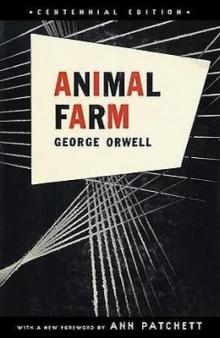 Animal Farm & 1984
Animal Farm & 1984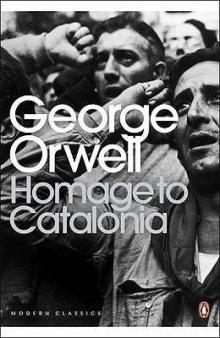 Homage to Catalonia
Homage to Catalonia Decline of the English Murder
Decline of the English Murder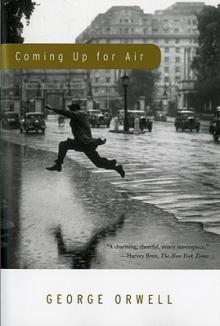 Coming Up for Air
Coming Up for Air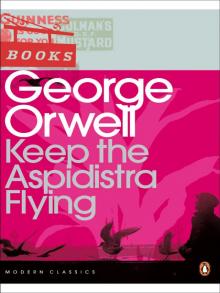 Keep the Aspidistra Flying
Keep the Aspidistra Flying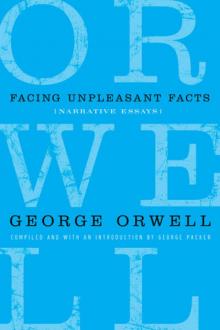 Facing Unpleasant Facts: Narrative Essays
Facing Unpleasant Facts: Narrative Essays The Complete Novels of George Orwell
The Complete Novels of George Orwell All Art Is Propaganda: Critical Essays
All Art Is Propaganda: Critical Essays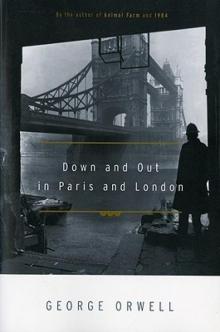 Down and Out in Paris and London
Down and Out in Paris and London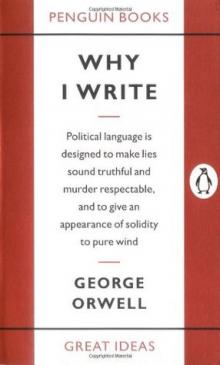 Why I Write
Why I Write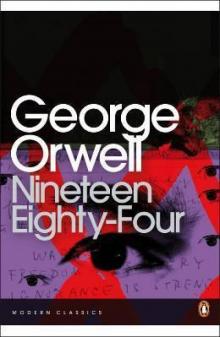 Nineteen Eighty-Four
Nineteen Eighty-Four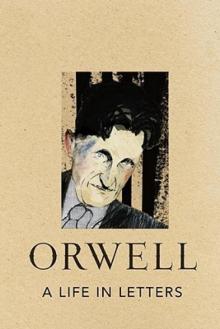 A Life in Letters
A Life in Letters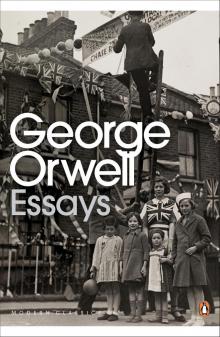 Essays
Essays A Clergyman's Daughter
A Clergyman's Daughter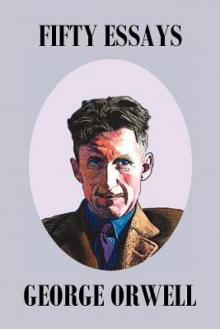 Fifty Orwell Essays
Fifty Orwell Essays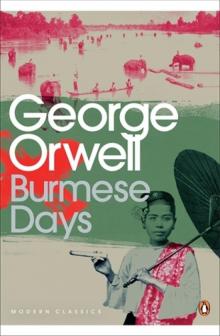 Burmese Days
Burmese Days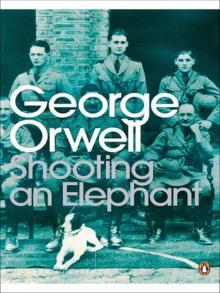 Shooting an Elephant
Shooting an Elephant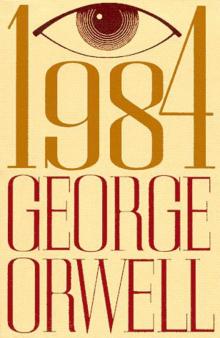 1984 (Penguin)
1984 (Penguin)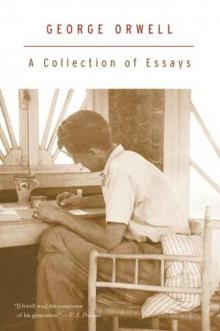 A Collection of Essays
A Collection of Essays 1984
1984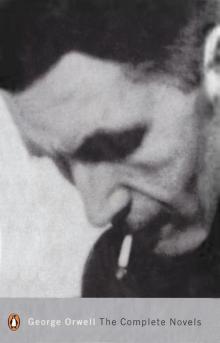 The Complete Novels
The Complete Novels All Art Is Propaganda
All Art Is Propaganda Orwell in Spain
Orwell in Spain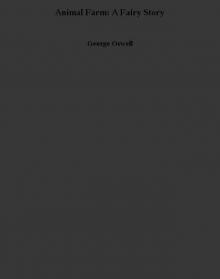 Animal Farm: A Fairy Story
Animal Farm: A Fairy Story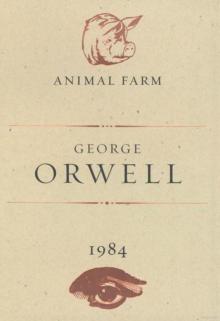 Animal Farm and 1984
Animal Farm and 1984